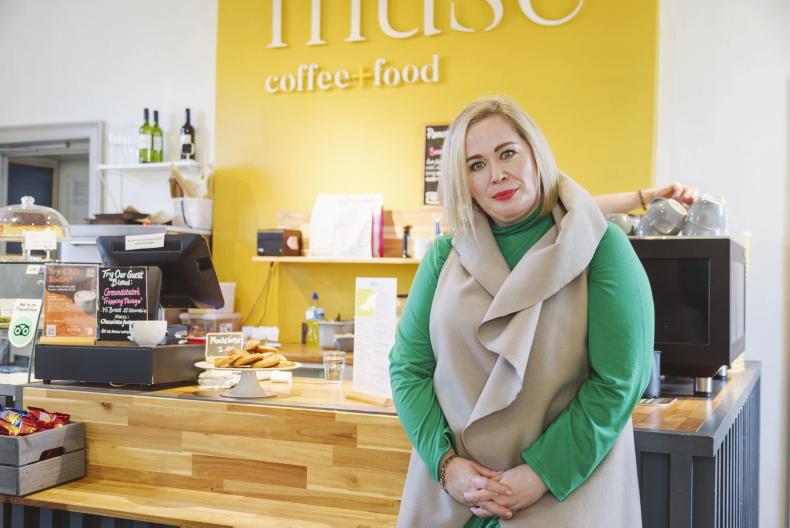Out of the COVID firepan and straight into the cost of living fire has been the reality for many Irish hospitality businesses. According to the Economic and Social Research Institute (ESRI), small and medium enterprises (<249 employees; SME’s) account for 99 per cent of businesses in Ireland and 68 per cent of private sector employment. This employment is very much the economic lifeblood of regional activity. In this way SME’s and farmers have a lot in common and are mutually reliant. Over the course of 2022, COVID-19 pandemic supports were unwound piece by piece. The reduced VAT rate for hospitality and tourism is one of the last supports and remains in place until the end of February. I am sure its return to 13.5% will be hotly contested by the various representative bodies in the weeks ahead.
Pandemic supports may have in some ways prolonged the life of some SME’s, an anomaly now “correcting”. This word, used in the context of business restructuring, became more familiar when the widely reported layoffs across the global technology sector were put down to a “correction”. Company CEO’s admitted that they over hired resources during the pandemic with the expectation that life post COVID, in terms of e-commerce, would remain as digitally reliant as life during COVID. I for one am glad that this has not been the case, but that said, life has not reverted to pre-COVID either, and this is impacting SME’s and hospitality in particular. This week Janine starts a four week series looking into how rural hospitality businesses can not only survive but thrive in Don't take your eye of the ball.

In week one of our Thriving Rural Hospitality series, Janine Kennedy speaks with business coach Tracie Daly \ Claire Nash
The Central Bank noted some time back, that insolvency rates were beginning to rise from their extraordinarily low levels. This is supported by PwC’s Insolvency Barometer, which tracks Irish company liquidations each year. The average since 2005 has been 53 business failures per 10,000. The latest report (Q1, 2023) revealed a 39% increase in business failures in 2022 (527 companies) compared to 2021 (379 companies). This represents 20 business failures per 10,000 companies in 2022 compared to 14.4 in 2021. Not surprisingly given their prominence, 99% of all 2022 insolvencies were SME’s. However, the report also outlines that current insolvency levels are still well below pre-pandemic levels (2019: 36 per 10,000) and only 18% of the peak insolvency rate experienced in 2012 (109 per 10,000). Businesses that may have been struggling pre-COVID, and utilised lifeline supports, faced an even more difficult trading environment in 2022. Between inflation, interest rates, energy costs, deferred tax liabilities and staff, for some, with core underlying profitability issues, it is too much. This is a double edged sword as consumers are also experiencing the same pressures.

Gabriel-Makhlouf-White, Governor Central Bank. The Central Bank noted some time back, that insolvency rates were beginning to rise from their extraordinarily low levels.
Recently economist Ciaran Fitzgerald commented that one lesson from the crash was the need for a balanced economy. A decade later it is a different type of economic crisis but the need remains the case. Another lesson appears to be; ‘act fast to reduce out-goings’. Cost of Living research conducted by the Worldwide Independent Network of Market Research (WIN) shows the while the proportion of the population struggling in Ireland (30%) is close to the global average, the Irish have been most likely to change with 70% of adults in Ireland reducing expenses. CEO of RED C (Irish member of WIN) Richard Colwell commented that “Irish resilience and experience with economic woes are clear, with the population reacting the most quickly globally to try and live within our means.” The choice: spend and put ourselves under pressure, don’t spend and we could lose more of our SME’s. No winners.
Read more
Mary Coughlan wants a results based dialogue - "No talking shop"
Editorial: I will come back to you on that! Readers views vital
Out of the COVID firepan and straight into the cost of living fire has been the reality for many Irish hospitality businesses. According to the Economic and Social Research Institute (ESRI), small and medium enterprises (<249 employees; SME’s) account for 99 per cent of businesses in Ireland and 68 per cent of private sector employment. This employment is very much the economic lifeblood of regional activity. In this way SME’s and farmers have a lot in common and are mutually reliant. Over the course of 2022, COVID-19 pandemic supports were unwound piece by piece. The reduced VAT rate for hospitality and tourism is one of the last supports and remains in place until the end of February. I am sure its return to 13.5% will be hotly contested by the various representative bodies in the weeks ahead.
Pandemic supports may have in some ways prolonged the life of some SME’s, an anomaly now “correcting”. This word, used in the context of business restructuring, became more familiar when the widely reported layoffs across the global technology sector were put down to a “correction”. Company CEO’s admitted that they over hired resources during the pandemic with the expectation that life post COVID, in terms of e-commerce, would remain as digitally reliant as life during COVID. I for one am glad that this has not been the case, but that said, life has not reverted to pre-COVID either, and this is impacting SME’s and hospitality in particular. This week Janine starts a four week series looking into how rural hospitality businesses can not only survive but thrive in Don't take your eye of the ball.

In week one of our Thriving Rural Hospitality series, Janine Kennedy speaks with business coach Tracie Daly \ Claire Nash
The Central Bank noted some time back, that insolvency rates were beginning to rise from their extraordinarily low levels. This is supported by PwC’s Insolvency Barometer, which tracks Irish company liquidations each year. The average since 2005 has been 53 business failures per 10,000. The latest report (Q1, 2023) revealed a 39% increase in business failures in 2022 (527 companies) compared to 2021 (379 companies). This represents 20 business failures per 10,000 companies in 2022 compared to 14.4 in 2021. Not surprisingly given their prominence, 99% of all 2022 insolvencies were SME’s. However, the report also outlines that current insolvency levels are still well below pre-pandemic levels (2019: 36 per 10,000) and only 18% of the peak insolvency rate experienced in 2012 (109 per 10,000). Businesses that may have been struggling pre-COVID, and utilised lifeline supports, faced an even more difficult trading environment in 2022. Between inflation, interest rates, energy costs, deferred tax liabilities and staff, for some, with core underlying profitability issues, it is too much. This is a double edged sword as consumers are also experiencing the same pressures.

Gabriel-Makhlouf-White, Governor Central Bank. The Central Bank noted some time back, that insolvency rates were beginning to rise from their extraordinarily low levels.
Recently economist Ciaran Fitzgerald commented that one lesson from the crash was the need for a balanced economy. A decade later it is a different type of economic crisis but the need remains the case. Another lesson appears to be; ‘act fast to reduce out-goings’. Cost of Living research conducted by the Worldwide Independent Network of Market Research (WIN) shows the while the proportion of the population struggling in Ireland (30%) is close to the global average, the Irish have been most likely to change with 70% of adults in Ireland reducing expenses. CEO of RED C (Irish member of WIN) Richard Colwell commented that “Irish resilience and experience with economic woes are clear, with the population reacting the most quickly globally to try and live within our means.” The choice: spend and put ourselves under pressure, don’t spend and we could lose more of our SME’s. No winners.
Read more
Mary Coughlan wants a results based dialogue - "No talking shop"
Editorial: I will come back to you on that! Readers views vital












SHARING OPTIONS